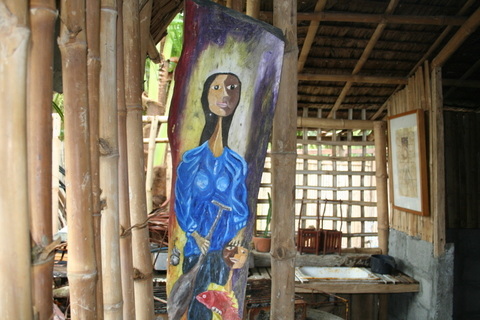I was there last week. And I can easily tell you that what they said is true. I can tell you too, (and this I swear with my life), nothing in this world can compare to the sweetness of the Negrense dialect.
Last week, on a night deprived of cellphones and laptops, we sat down and listened as they told us many things. About Hiligaynon "balaks" and legends, about Margaha and how it came about.
The story goes that in one of the islands of Negros a long time ago, there lived a rich white girl who fell in love with a poor black native. It was the kind of love that was bound to fail, because it happened at a time when the world was divided into black and white. No one was supposed to defy it.
So very angry were the gods when they learned of this that they turned the lovers into ashes and scattered them on opposite directions of the Visayan sea. Cursed never to meet each other again, the lovers fell silent. But not without passing the curse of color into the places where their ashes fell: white sands on islands where hers fell; dark, almost black, on islands where his fell.
You will feel the love story if you travel across the nearby islands, from Boracay where the sand is ethereal, soft, and white, to Sagay more than 6 hours by bus after, where the sand is blackest, as though the gods themselves wanted it that way for the contrast to be evident.
When I came to Sagay, and into the resort whose name, Margaha, in honor of the man whose ashes fell there, I felt as though I opened my eyes for the first time.
There were so many that we ran out of space easily. But it should have been enough to send the message.




 RSS Feed
RSS Feed
